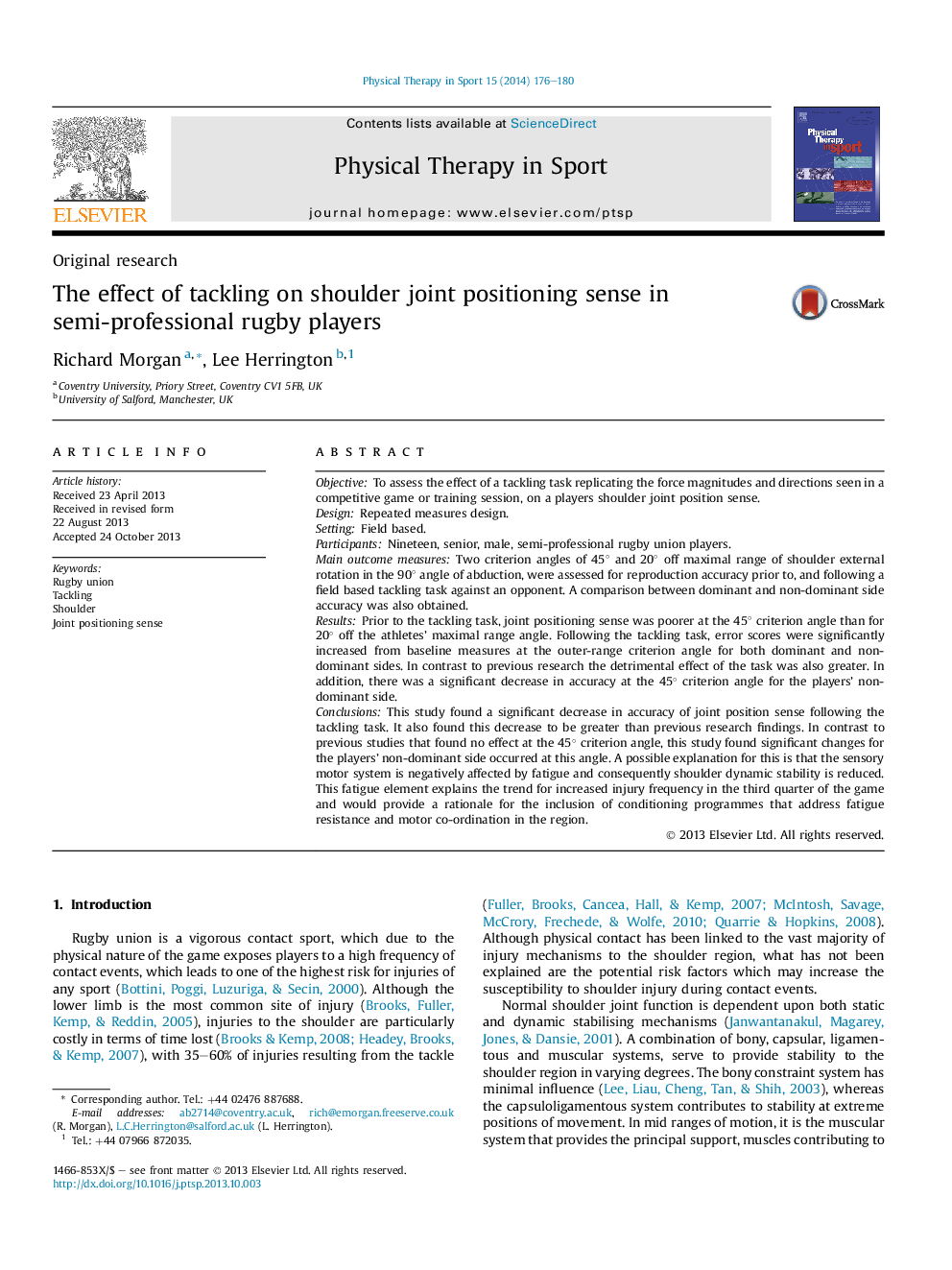| کد مقاله | کد نشریه | سال انتشار | مقاله انگلیسی | نسخه تمام متن |
|---|---|---|---|---|
| 2710360 | 1144997 | 2014 | 5 صفحه PDF | دانلود رایگان |
ObjectiveTo assess the effect of a tackling task replicating the force magnitudes and directions seen in a competitive game or training session, on a players shoulder joint position sense.DesignRepeated measures design.SettingField based.ParticipantsNineteen, senior, male, semi-professional rugby union players.Main outcome measuresTwo criterion angles of 45° and 20° off maximal range of shoulder external rotation in the 90° angle of abduction, were assessed for reproduction accuracy prior to, and following a field based tackling task against an opponent. A comparison between dominant and non-dominant side accuracy was also obtained.ResultsPrior to the tackling task, joint positioning sense was poorer at the 45° criterion angle than for 20° off the athletes' maximal range angle. Following the tackling task, error scores were significantly increased from baseline measures at the outer-range criterion angle for both dominant and non-dominant sides. In contrast to previous research the detrimental effect of the task was also greater. In addition, there was a significant decrease in accuracy at the 45° criterion angle for the players' non-dominant side.ConclusionsThis study found a significant decrease in accuracy of joint position sense following the tackling task. It also found this decrease to be greater than previous research findings. In contrast to previous studies that found no effect at the 45° criterion angle, this study found significant changes for the players' non-dominant side occurred at this angle. A possible explanation for this is that the sensory motor system is negatively affected by fatigue and consequently shoulder dynamic stability is reduced. This fatigue element explains the trend for increased injury frequency in the third quarter of the game and would provide a rationale for the inclusion of conditioning programmes that address fatigue resistance and motor co-ordination in the region.
Journal: Physical Therapy in Sport - Volume 15, Issue 3, August 2014, Pages 176–180
